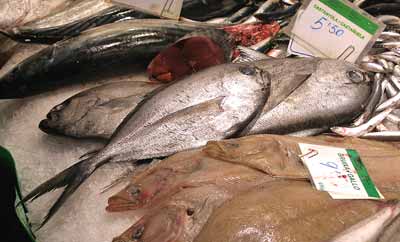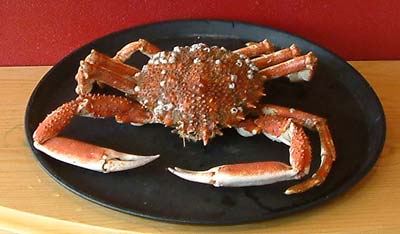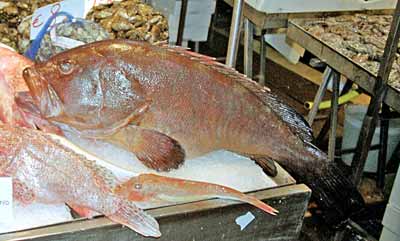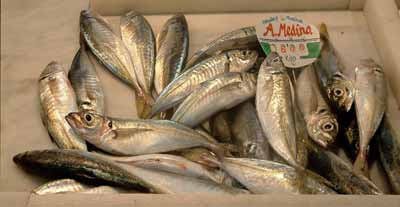
Ray’s bream. A type of sea bream or porgy. Confusingly, in the US this is known as pomfret which, in the UK, is a quite different fish.
Alfonsino or (incorrectly) red bream. A deep-bodied fish which may be treated in the same way as true sea breams. It is a versatile fish and may be poached, baked, fried or cooked by any means.
School, tope or soupfin shark. The meat of the school shark is consumed in Spanish cuisine where it is usually known as cazon. Among recipes are the traditional "Cazon en adobo". In Mexican cuisine the term cazon refers to other species, and is prepared similarly.

Spider crab. This is a crab with little meat but what it has is well-flavoured. It has a large, oval spiked body and long, thin spidery legs, hence its name.

Wreckfish or stone bass, a type of grouper cooked like wrasse and used in soups or cut into steaks or filleted. It may grow as large as 2 m (6 ft) in length and it is found in both the Mediterranean and throughout the Atlantic. Wreckfish are inclined to follow bits of flotsam and jetsam floating on the surface of the sea.

Wreckfish or stone bass, a type of grouper cooked like wrasse and used in soups or cut into steaks or filleted. It may grow as large as 2 m (6 ft) in length and it is found in both the Mediterranean and throughout the Atlantic. Wreckfish are inclined to follow bits of flotsam and jetsam floating on the surface of the sea.

Scad, jack or horse mackerel. The tough part near the tail must be removed before cooking. Fish which have a firm tail section and bright eyes are the ones to select. They are at their best from spring to autumn (US: fall). In Japan they are used for sashimi or sushi and may also be grilled, simmered or deep-fried.